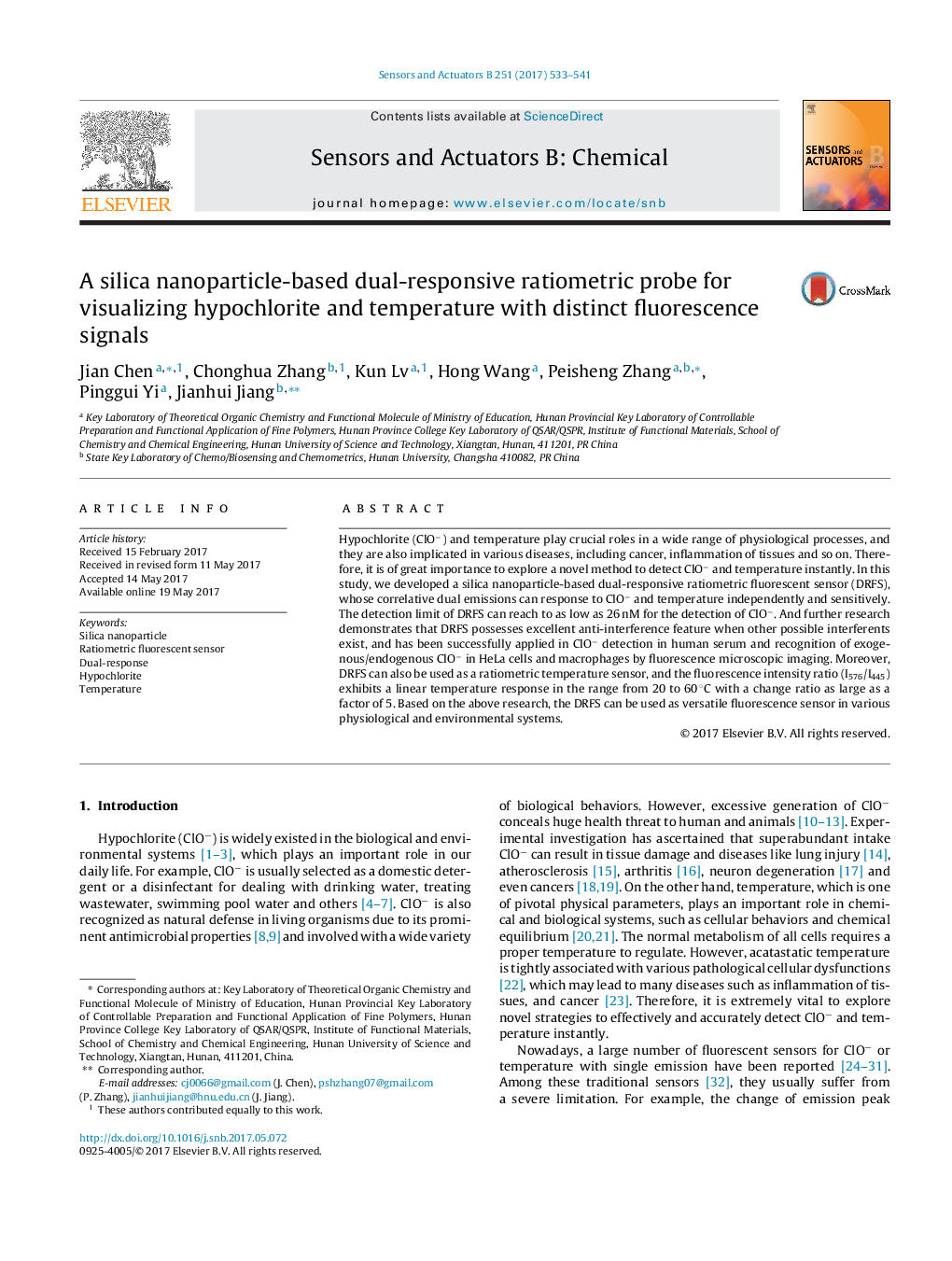| Article ID | Journal | Published Year | Pages | File Type |
|---|---|---|---|---|
| 5008900 | Sensors and Actuators B: Chemical | 2017 | 9 Pages |
â¢A silica nanoparticle-based dual-responsive ratiometric fluorescent sensor was synthesized.â¢The sensor is responsive to ClOâ and temperature independently and sensitively.â¢The detection limit of sensor is 26 nM for ClOâ.â¢The sensor can realize monitoring of ClOâ in human serum and live cells.
Hypochlorite (ClOâ) and temperature play crucial roles in a wide range of physiological processes, and they are also implicated in various diseases, including cancer, inflammation of tissues and so on. Therefore, it is of great importance to explore a novel method to detect ClOâ and temperature instantly. In this study, we developed a silica nanoparticle-based dual-responsive ratiometric fluorescent sensor (DRFS), whose correlative dual emissions can response to ClOâ and temperature independently and sensitively. The detection limit of DRFS can reach to as low as 26 nM for the detection of ClOâ. And further research demonstrates that DRFS possesses excellent anti-interference feature when other possible interferents exist, and has been successfully applied in ClOâ detection in human serum and recognition of exogenous/endogenous ClOâ in HeLa cells and macrophages by fluorescence microscopic imaging. Moreover, DRFS can also be used as a ratiometric temperature sensor, and the fluorescence intensity ratio (I576/I445) exhibits a linear temperature response in the range from 20 to 60 °C with a change ratio as large as a factor of 5. Based on the above research, the DRFS can be used as versatile fluorescence sensor in various physiological and environmental systems.
Graphical abstractDownload high-res image (116KB)Download full-size imageA dual-response ratiometric fluorescent biosensor based on silica nanoparticle was synthesized. The sensor exhibited the attractive property of independent dual-response, is not only a ratiometric fluorescent sensor for sensitively and selectively detecting ClOâ, but also a ratiometric fluorescence thermometers with good cycling capability towards temperature. More importantly, the detection limit of sensor for detecting ClOâ can reach as low as 26Â nM, and the sensor has been proved to be a an effective and outstanding fluorescent ClOâ sensor in biological system (human serum) and for microscopic cell imaging.
